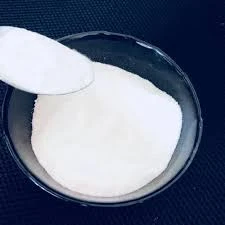
Dec . 12, 2024 05:05 Back to list
hpmc viscosity grades
Understanding HPMC Viscosity Grades A Comprehensive Guide
Hydroxypropyl Methylcellulose (HPMC) is a versatile and widely used cellulose ether in various industries, including pharmaceuticals, food, cosmetics, and construction. One of the critical aspects of HPMC that affects its application and performance is its viscosity grading. This article delves into the significance of HPMC viscosity grades, their classification, and how they impact various applications.
What is HPMC?
HPMC is a non-ionic, water-soluble polymer derived from cellulose. It is created through the modification of cellulose with hydroxypropyl and methyl groups, enhancing its solubility and functionality. The resulting compound boasts several desirable properties, including thickening, emulsifying, film-forming, and providing a controlled-release mechanism. These qualities make HPMC an ideal ingredient in many formulations, from tablet binders and coatings to food thickeners and cosmetic stabilizers.
The Importance of Viscosity in HPMC
Viscosity is a crucial parameter that influences the performance of HPMC in various applications. It is a measure of a fluid's resistance to flow; in the case of HPMC, it determines how thick or thin a solution will be when the polymer is dissolved in water. The viscosity of HPMC solutions can significantly affect the processing and final properties of products, such as stability, texture, and release profiles.
Classification of HPMC Viscosity Grades
HPMC is available in a range of viscosity grades, typically classified by their viscosity measured in centipoise (cP) or millipascal-second (mPa·s) at a specific concentration and temperature. Common viscosity grades include low, medium, and high viscosity HPMC.
- Low Viscosity HPMC Usually falls within the range of 1000 to 5000 cP. It is often used in applications that require a thinner consistency, such as in liquid formulations, sauces, and gels. Low viscosity grades allow for easier processing and quicker dissolution, making them ideal for products where rapid dispersion is desired.
hpmc viscosity grades

- Medium Viscosity HPMC These grades typically range from 5000 to 15000 cP. They strike a balance between thickness and flow, making them suitable for various applications, including pharmaceuticals and cosmetics where a medium level of creaminess or stability is needed. Medium viscosity HPMC can enhance the texture of creams and lotions while providing sufficient thickness to prevent separation.
- High Viscosity HPMC These grades generally exceed 15000 cP and are used in applications requiring significant viscosity and stability. High viscosity HPMC is ideal for thickening agents in construction materials, pharmaceuticals (such as sustained-release formulations), and cosmetic products that require substantial body and consistency.
Factors Influencing the Selection of HPMC Viscosity Grades
When choosing the appropriate HPMC viscosity grade for a specific application, several factors must be considered
1. Final Product Requirements The desired texture, appearance, and consistency of the finished product significantly influence the selection of the viscosity grade. For instance, a high-viscosity grade may be preferred for a thick gel, while a low-viscosity grade may suffice for beverages.
2. Processing Conditions Temperature, shear rate, and the method used for mixing and processing can all affect how HPMC performs in a formulation. Knowing the processing conditions helps in selecting a viscosity grade that will maintain performance throughout production.
3. Compatibility with Other Ingredients HPMC is often used in formulations with various other compounds. Understanding how different viscosity grades interact with these ingredients is essential for achieving the desired final product.
Conclusion
In summary, HPMC viscosity grades play a critical role in determining the performance and application of this multifaceted polymer. By understanding the distinctions between low, medium, and high viscosity grades, manufacturers can make informed decisions that lead to the successful formulation of products across various industries. Whether in pharmaceuticals, food, cosmetics, or construction, the right HPMC grade can enhance product quality, stability, and effectiveness, ultimately meeting consumer expectations and demands.
-
Versatile Hpmc Uses in Different Industries
NewsJun.19,2025
-
Redispersible Powder's Role in Enhancing Durability of Construction Products
NewsJun.19,2025
-
Hydroxyethyl Cellulose Applications Driving Green Industrial Processes
NewsJun.19,2025
-
Exploring Different Redispersible Polymer Powder
NewsJun.19,2025
-
Choosing the Right Mortar Bonding Agent
NewsJun.19,2025
-
Applications and Significance of China Hpmc in Modern Industries
NewsJun.19,2025







